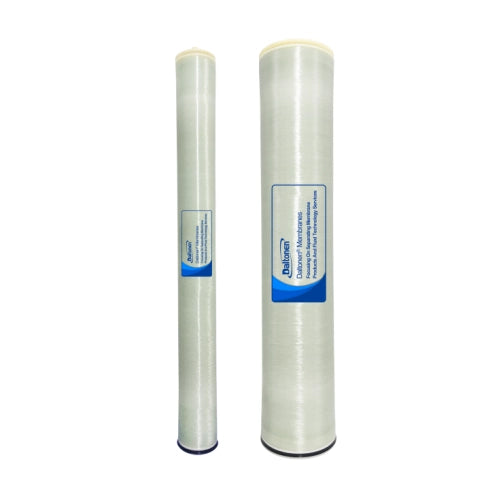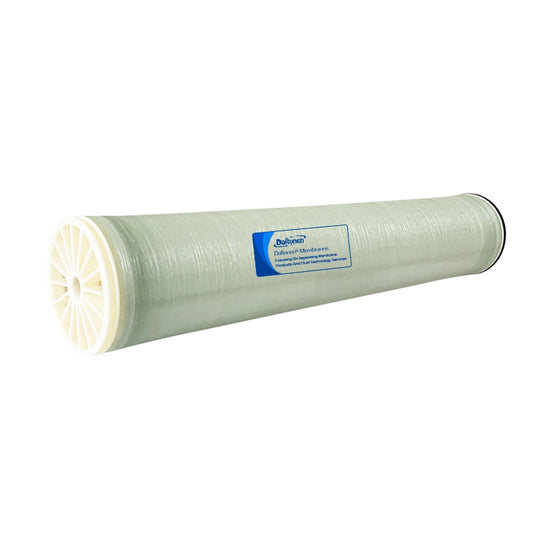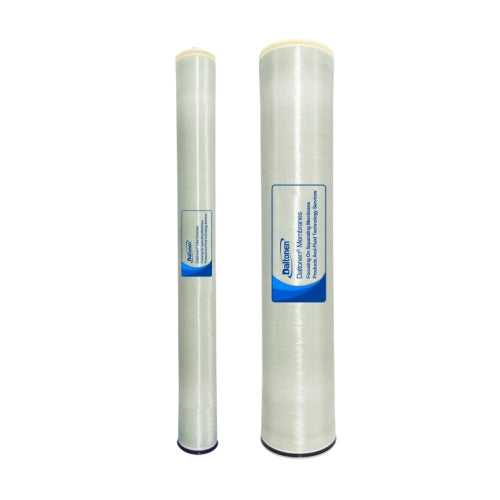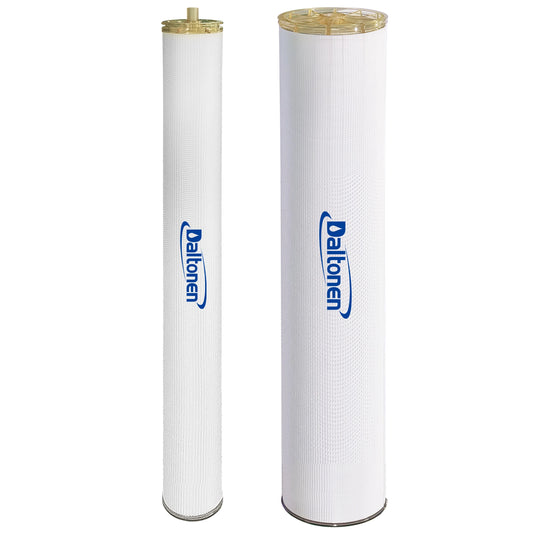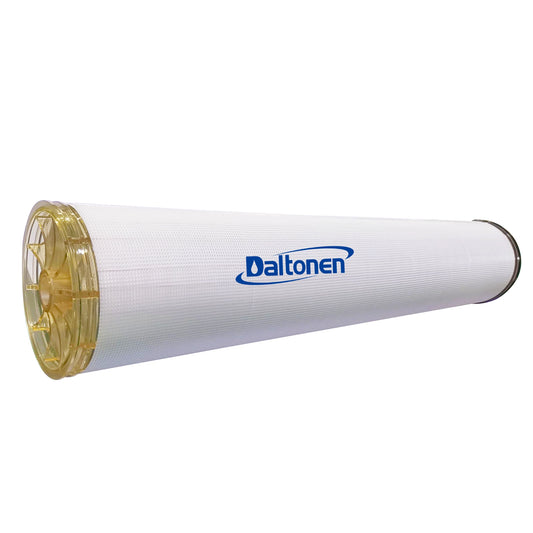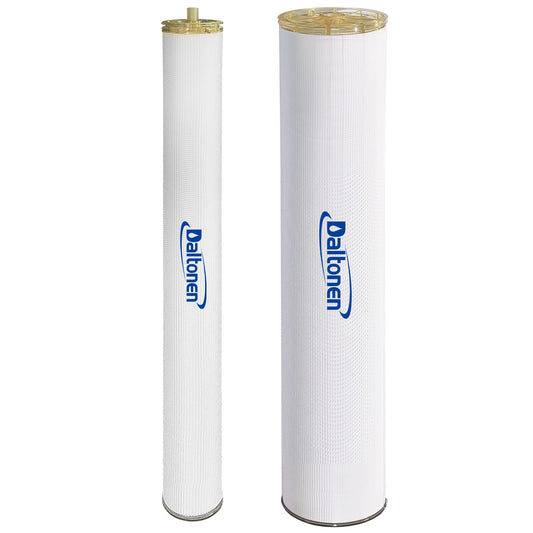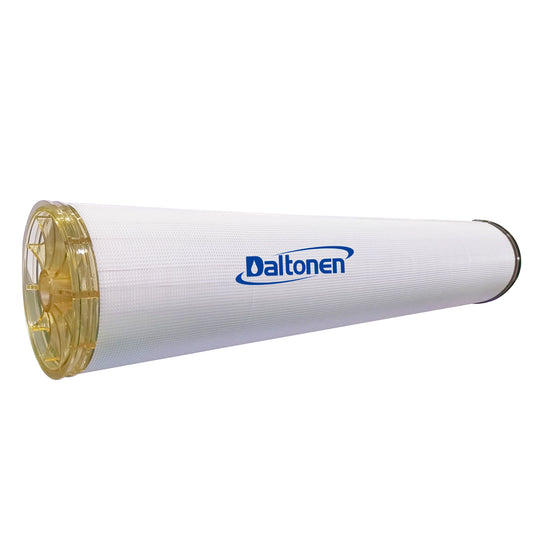How to Remove Bacterial Mycotoxins from Pharmaceutical Wastewater through RO Technology
03 Jul 2025
1. Characteristics and Hazards of Pharmaceutical Wastewater
1.1 Complexity of Pharmaceutical Wastewater Composition
Pharmaceutical wastewater mainly originates from the drug production process and has an extremely complex composition. It contains a large amount of organic and inorganic substances, heavy metals, and various microorganisms. For example, the chemical oxygen demand (COD) in antibiotic production wastewater can reach tens of thousands of milligrams per liter, with antibiotic residue levels reaching several thousand milligrams per liter. These residual antibiotics are not only difficult to degrade but may also persist in the environment for a long time, posing potential hazards to ecosystems. In addition, pharmaceutical wastewater contains a large amount of organic solvents, such as methanol and ethanol. These solvents are highly volatile, which can easily cause air pollution and also increase the difficulty of wastewater treatment.
1.2 Hazards of Bacterial Mycotoxins
Bacterial mycotoxins are a class of toxic secondary metabolites produced by molds and are widely present in pharmaceutical wastewater. Common mycotoxins include aflatoxins and ochratoxins. Aflatoxin is one of the strongest known carcinogens, with toxicity even stronger than that of potassium cyanide. Although the content of bacterial mycotoxins in pharmaceutical wastewater is relatively low, their hazards cannot be ignored. Studies have shown that even at low concentrations, mycotoxins can have toxic effects on aquatic organisms, inhibiting their growth and reproduction. When pharmaceutical wastewater containing mycotoxins is discharged directly without treatment, it will pollute water bodies and, through the transfer of the food chain, pose potential threats to human health. Long-term exposure to environments polluted by mycotoxins may lead to health problems such as decreased human immunity and liver damage.

2. Principle of RO Technology
2.1 Basic Principle of Reverse Osmosis Technology
Reverse Osmosis (RO) technology is an efficient and energy-saving membrane separation technology. Its basic principle is to use the selective permeability of semipermeable membranes to drive water molecules to permeate from a high-concentration solution to a low-concentration solution under the action of a pressure difference, thereby achieving the separation of solutes and solvents. In the treatment of pharmaceutical wastewater, RO technology is mainly used to remove dissolved organic substances, heavy metal ions, and harmful substances such as bacterial mycotoxins from wastewater.
-
Pressure-driven: The core of RO technology is to apply a pressure higher than the osmotic pressure to force water molecules to permeate in the opposite direction. Osmotic pressure is the attraction of solute particles in a solution to water molecules, and its magnitude is directly proportional to the concentration of the solution. In pharmaceutical wastewater, due to the large amount of solutes, the osmotic pressure is relatively high. By applying a higher pressure, the resistance of osmotic pressure can be overcome, allowing water molecules to move from the wastewater side through the semipermeable membrane to the pure water side.
-
Semipermeable membrane characteristics: The semipermeable membrane is a key component of RO technology, with pore sizes typically ranging from 0.1 to 1 nanometer, which can effectively intercept most dissolved substances. The materials of semipermeable membranes mainly include cellulose acetate and polyamide. These materials have good chemical stability and mechanical strength, enabling them to operate stably in complex wastewater environments for a long time. For example, the retention rate of polyamide membranes for organic substances and microorganisms can be as high as over 99%, and the removal rate of heavy metal ions also exceeds 95%.
-
Energy consumption: The operation of RO technology requires a certain amount of energy to provide the pressure difference. Generally, the energy consumption for treating 1 cubic meter of wastewater is about 2 to 5 kilowatt-hours. Although the energy consumption is relatively high, compared with traditional wastewater treatment methods, RO technology has higher efficiency and better treatment effects, especially in the removal of harmful substances such as bacterial mycotoxins.
2.2 RO Technology Filtration Mechanism
The filtration mechanism of RO technology is mainly based on the physical sieving and chemical adsorption of semipermeable membranes, which can effectively remove harmful substances such as bacterial mycotoxins from pharmaceutical wastewater.
-
Physical sieving: The pore size of the semipermeable membrane is very small, which can effectively intercept particles and molecules larger than the pore size. The molecular size of bacterial mycotoxins is usually at the nanometer level, much larger than the pore size of the semipermeable membrane. Therefore, when wastewater passes through the semipermeable membrane, bacterial mycotoxins are intercepted on the surface of the membrane, while water molecules can pass through smoothly. For example, the molecular diameter of aflatoxin is about 0.5 nanometers, while the pore size of common RO membranes is 0.1 nanometers, so it can completely intercept aflatoxin and prevent it from entering the permeate.
-
Chemical adsorption: The surface of the semipermeable membrane has certain chemical activity and can adsorb some substances in the wastewater. For example, the surface of polyamide membranes carries a negative charge. Under certain pH conditions, it can adsorb organic substances and metal ions with a positive charge. The surface of bacterial mycotoxin molecules usually has polar groups that can interact with the surface of the semipermeable membrane through electrostatic adsorption, thereby further increasing its retention efficiency. Studies have shown that through chemical adsorption, the retention rate of bacterial mycotoxins by RO membranes can be increased by 10% to 20%.
-
Concentration polarization: During the operation of RO technology, as water molecules continuously pass through the semipermeable membrane and solutes are intercepted on the membrane surface, the concentration of solutes on the membrane surface gradually increases, forming a concentration polarization phenomenon. Concentration polarization increases the permeation resistance on the membrane surface and reduces the flux of the membrane. To alleviate concentration polarization, methods such as increasing the water flow rate and reducing the operating pressure are usually adopted to improve the performance and service life of the membrane. For example, in the treatment of pharmaceutical wastewater, increasing the flow rate of wastewater can effectively reduce the accumulation of solutes on the membrane surface and improve the filtration efficiency of RO technology.
3. Factors Affecting the Removal of Bacterial Mycotoxins
3.1 Impact of Wastewater Quality
The complex composition of pharmaceutical wastewater has a significant impact on the removal of bacterial mycotoxins.
-
Organic matter content: The high concentration of organic matter in pharmaceutical wastewater increases the risk of RO membrane pollution. Studies have shown that when the chemical oxygen demand (COD) in wastewater exceeds 10,000 mg/L, the flux of the RO membrane decreases rapidly, and the removal efficiency of bacterial mycotoxins is reduced by about 15%. This is because organic matter forms a pollution layer on the membrane surface, hindering the passage of water molecules and mycotoxin molecules.
-
pH value: The pH value of wastewater affects the chemical adsorption performance of the RO membrane. Under acidic conditions (pH < 4), the negative charge on the surface of the RO membrane decreases, weakening its adsorption capacity for negatively charged mycotoxin molecules and reducing the removal efficiency by about 10%. However, under neutral or weakly alkaline conditions (pH 6.5-8.5), the adsorption performance of the RO membrane is optimal, and the removal rate of bacterial mycotoxins can reach more than 99%.
-
Ionic strength: The ionic strength of wastewater affects the charge state of mycotoxin molecules and the adsorption capacity of the RO membrane. High ionic strength (such as salinity exceeding 5,000 mg/L) can shield the charge on the surface of mycotoxin molecules, reducing their electrostatic adsorption with the RO membrane and resulting in a decrease in removal efficiency by about 12%. In addition, high ionic strength also increases the permeation resistance on the membrane surface, reducing the flux of the membrane.
3.2 Impact of RO Membrane Characteristics
The physical and chemical properties of the RO membrane play a key role in the removal of bacterial mycotoxins.
-
Pore size of the membrane: The pore size of the RO membrane is an important factor determining its retention efficiency. Studies have shown that RO membranes with pore sizes between 0.1 and 0.2 nanometers have the highest retention rate for bacterial mycotoxins, reaching more than 99.5%. When the pore size is greater than 0.2 nanometers, the retention rate drops significantly because some mycotoxin molecules can pass through the membrane pores into the permeate.
-
Membrane material: Different membrane materials have significant differences in the removal of bacterial mycotoxins. Polyamide membranes, due to their good chemical stability and high adsorption performance, can achieve a removal rate of more than 99% for mycotoxins. In contrast, cellulose acetate membranes have a relatively lower removal rate of about 95%. This is because polyamide membranes have more negative charges on their surface, which can more effectively adsorb mycotoxin molecules with a positive charge or polar groups.
-
Membrane surface modification: Modifying the surface of the RO membrane can improve its removal efficiency for bacterial mycotoxins. For example, introducing nanomaterials (such as titanium dioxide nanoparticles) on the membrane surface can enhance the membrane's adsorption capacity and antibacterial performance. Studies have shown that RO membranes modified with nanomaterials can increase the removal rate of bacterial mycotoxins by 15% to 20%, while also significantly improving the membrane's anti-pollution performance.
3.3 Impact of Operating Conditions
The operating conditions of RO technology also have an important impact on the removal of bacterial mycotoxins.
-
Operating pressure: Appropriate operating pressure can increase the flux and removal efficiency of the RO membrane. Studies have shown that when the operating pressure is between 1.5 and 2.5 MPa, the removal rate of bacterial mycotoxins by the RO membrane is the highest, reaching more than 99%. Too low operating pressure leads to insufficient flux, while too high pressure increases energy consumption and may damage the membrane, reducing its retention efficiency.
-
Flow rate: The flow rate of wastewater has a significant impact on the performance of the RO membrane and the removal effect. Higher flow rates can reduce the accumulation of solutes on the membrane surface, alleviate concentration polarization, and increase the flux and removal efficiency of the membrane. Experiments have shown that when the wastewater flow rate is between 2 and 3 m/s, the removal rate of bacterial mycotoxins by the RO membrane can reach more than 98%, while a flow rate below 1 m/s reduces the removal rate by about 10%.
-
Temperature: Operating temperature affects the water flux of the RO membrane and the diffusion rate of solutes. Within the temperature range of 15-30°C, the performance of the RO membrane is relatively stable, and the removal rate of bacterial mycotoxins can reach 99%. Too high temperature (above 40°C) can lead to a decline in the performance of the membrane material, reducing its retention efficiency, while too low temperature (below 5°C) can reduce the diffusion rate of water molecules and decrease the flux of the membrane.

4. Optimization Strategies for Removing Bacterial Mycotoxins with RO Technology
4.1 Optimization of Membrane Materials and Structures
Optimizing RO membrane materials and structures is a key way to improve the removal efficiency of bacterial mycotoxins.
-
Development of new membrane materials: Developing membrane materials with higher hydrophilicity, anti-pollution, and adsorption capacity is a current research focus. For example, it has been found that doping polyamide membranes with hydrophilic nanomaterials (such as graphene oxide) can significantly improve the membrane's anti-pollution performance and adsorption capacity for mycotoxins. Polyamide membranes doped with graphene oxide can increase the removal rate of bacterial mycotoxins to 99.8%, and extend the service life of the membrane by 30%.
-
Membrane surface modification: Modifying the surface of the RO membrane can effectively improve its performance. Techniques such as plasma treatment and UV grafting can introduce specific functional groups on the membrane surface to enhance its adsorption capacity and antibacterial performance. For example, introducing quaternary ammonium groups on the membrane surface through UV grafting technology can increase the membrane's adsorption capacity for mycotoxins by 20%, while also achieving a bacterial inhibition rate of more than 95%.
-
Design of composite membrane structures: Designing multi-layer composite membrane structures can integrate the advantages of different membrane materials to improve removal efficiency. For example, a double-layer composite membrane structure composed of a polyamide layer and an inorganic ceramic layer, where the polyamide layer is responsible for adsorption and interception of mycotoxins, and the inorganic ceramic layer provides mechanical support and enhances the membrane's anti-pollution performance. This composite membrane can achieve a removal rate of 99.9% for bacterial mycotoxins and shows good stability in complex pharmaceutical wastewater environments.
4.2 Integration of Pretreatment and Post-treatment Technologies
Combining pretreatment and post-treatment technologies can effectively improve the overall performance of RO technology and the removal efficiency of bacterial mycotoxins.
-
Pretreatment technologies: Pretreatment technologies can remove large-particle impurities, part of the organic matter, and heavy metal ions from wastewater, reducing the risk of RO membrane pollution, increasing the membrane flux, and extending its service life. Common pretreatment methods include coagulation sedimentation, activated carbon adsorption, and ultrafiltration. For example, after coagulation sedimentation pretreatment, the content of suspended solids in wastewater can be reduced by 80%, and the chemical oxygen demand (COD) can be reduced by 30%. The flux of the RO membrane can be increased by 20%, and the removal efficiency of bacterial mycotoxins can be increased by 10%.
-
Post-treatment technologies: Post-treatment technologies can further remove the small amount of residual bacterial mycotoxins in the RO permeate, ensuring that the effluent quality meets higher standards. Common post-treatment methods include ozonation, UV disinfection, and activated carbon adsorption. For example, using ozonation as a post-treatment method can reduce the concentration of residual bacterial mycotoxins in the permeate to below the detection limit, and the effluent quality fully complies with discharge standards.
-
Synergistic treatment effects: The combination of pretreatment and post-treatment technologies can significantly improve the overall performance of RO technology. Studies have shown that using a combination process of coagulation sedimentation pretreatment and ozonation post-treatment, the total removal rate of bacterial mycotoxins by RO technology can reach 99.99%. The system operates stably, and energy consumption is reduced by 15%.
4.3 Optimization of Operating Parameters
Optimizing the operating parameters of RO technology can improve removal efficiency, reduce energy consumption, and extend the service life of the membrane.
-
Optimization of operating pressure: Choosing the appropriate operating pressure according to the characteristics of the wastewater and the performance of the membrane is crucial. Studies have shown that within the operating pressure range of 1.8-2.2 MPa, the removal rate of bacterial mycotoxins by the RO membrane is the highest, reaching more than 99.5%, while energy consumption is relatively low. Too high pressure can damage the membrane and reduce its retention efficiency, while too low pressure will lead to insufficient flux and affect the treatment effect.
-
Optimization of flow rate: The flow rate of wastewater has a significant impact on the performance of the RO membrane and the removal effect. Experiments have shown that when the wastewater flow rate is between 2.5 and 3.5 m/s, the removal rate of bacterial mycotoxins by the RO membrane can reach more than 98.5%, and the accumulation of solutes on the membrane surface is less, effectively alleviating the phenomenon of concentration polarization. Appropriate flow rate can increase the flux and removal efficiency of the membrane, while reducing the risk of membrane pollution.
-
Optimization of temperature: Operating temperature affects the water flux of the RO membrane and the diffusion rate of solutes. Within the temperature range of 20-25°C, the performance of the RO membrane is the most stable, and the removal rate of bacterial mycotoxins can reach 99.2%. Too high temperature can lead to a decline in the performance of the membrane material, reducing its retention efficiency, while too low temperature will reduce the diffusion rate of water molecules and decrease the flux of the membrane. Therefore, controlling the operating temperature within an appropriate range is an important measure to optimize RO technology.
5. Summary
Bacterial mycotoxins in pharmaceutical wastewater pose serious environmental and health hazards, and Reverse Osmosis (RO) technology, with its efficient separation performance, shows great potential in removing these harmful substances. Through in-depth analysis of the principles of RO technology, its filtration mechanisms, and the various factors affecting the removal of bacterial mycotoxins, the following key conclusions can be drawn:
-
Advantages of RO technology: RO technology, based on the physical sieving and chemical adsorption of semipermeable membranes, can effectively intercept nanoscale harmful substances such as bacterial mycotoxins. Under ideal conditions, its removal rate for bacterial mycotoxins can exceed 99%, and it has the advantages of high treatment efficiency, simple operation, and the ability to achieve automated control. It is suitable for the treatment of complex and highly hazardous wastewater like pharmaceutical wastewater.
-
Complexity of influencing factors: The characteristics of pharmaceutical wastewater quality (such as organic matter content, pH value, ionic strength), the characteristics of the RO membrane (such as pore size, membrane material, surface modification), and operating conditions (such as operating pressure, flow rate, temperature) all have a significant impact on the removal of bacterial mycotoxins. These factors are interwoven, determining the performance of RO technology in practical applications. For example, high-concentration organic wastewater can exacerbate membrane pollution and reduce removal efficiency, while appropriate membrane materials and optimized operating parameters can significantly improve removal effects.
-
Effectiveness of optimization strategies: By optimizing membrane materials and structures (such as developing new membrane materials, modifying membrane surfaces, and designing composite membrane structures), integrating pretreatment and post-treatment technologies, and precisely controlling operating parameters, the efficiency of RO technology in removing bacterial mycotoxins can be effectively improved, energy consumption can be reduced, and the service life of the membrane can be extended. These optimization strategies provide feasible ways to enhance the application effects of RO technology in the field of pharmaceutical wastewater treatment, bringing it closer to the requirements for large-scale practical applications.
In summary, RO technology has broad application prospects in the removal of bacterial mycotoxins from pharmaceutical wastewater. However, it also faces many challenges. Future research needs to further explore the innovation of membrane materials, refined control of operating conditions, and efficient integration with other treatment technologies to achieve wider application and better performance of RO technology in the field of pharmaceutical wastewater treatment, providing stronger technical support for protecting the environment and human health.
Tags:
